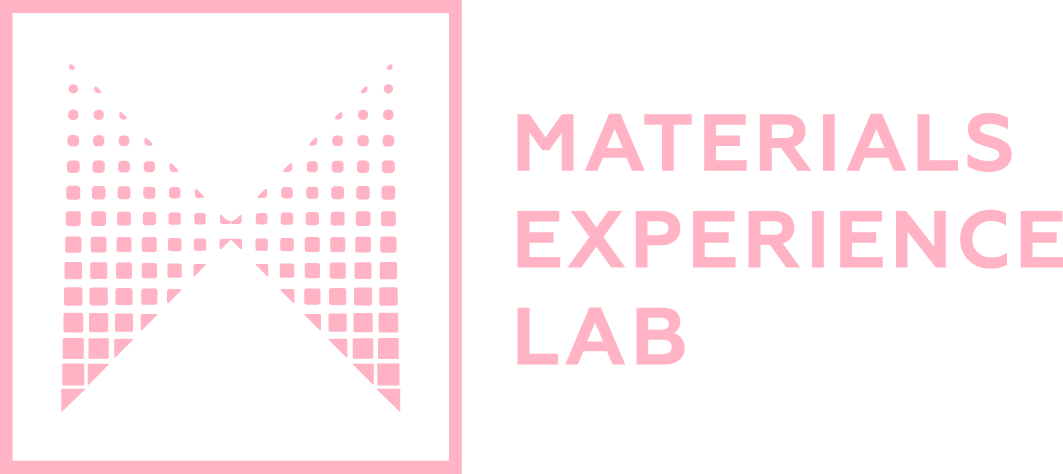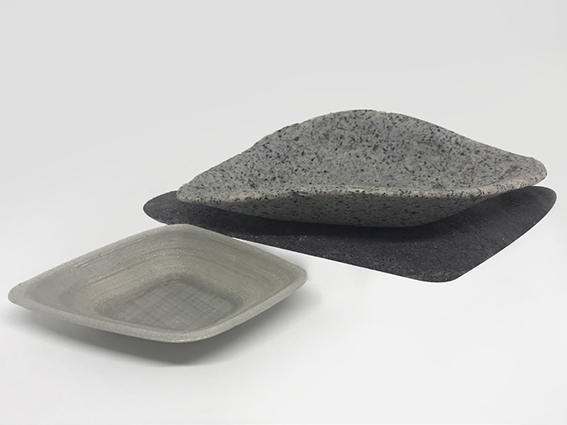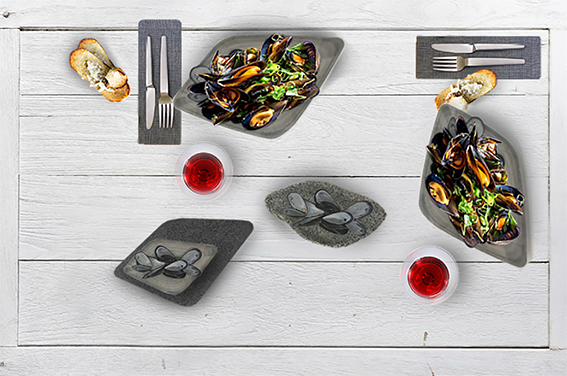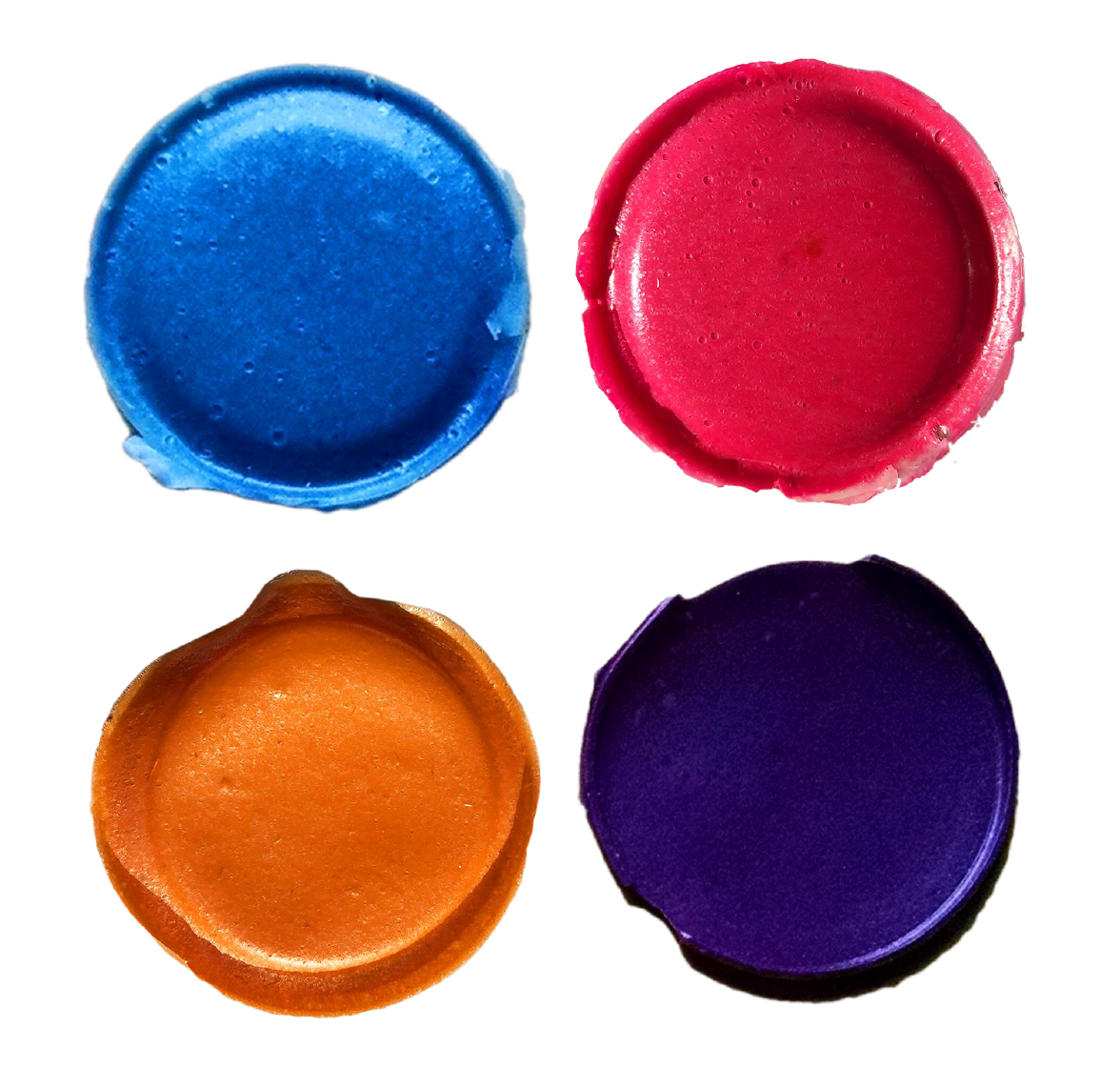MAteriality between food and design
The Materials Experience Lab proposes Materiality between Food and Design as a research line, inquiring both the role of materials in shaping the experience of food and vice versa, the food potential in generating meaningful material experiences. In this space, we do research projects, workshops, courses, graduation projects, and publications.
Development and scenario of application of a bio-material based on mussels shells, byproducts of the food industry. Master’s Graduation project by Chiara Stopponi. Tutor: Valentina Rognoli. Co-tutor: Stefano Parisi. Politecnico di Milano, School of Design, 2018.
The cross-pollination between the worlds of food and design started when eating transformed from a purely biological necessity into a cultural phenomenon. In addition, innovation in the field of food may have a significant impact on social behavior. The contribution of design to the food realm is multifaceted and goes from the material dimension to the most immaterial one. Design and food interact on several overlapping layers: material (product), immaterial (culture, experience, sensory) but also prospective (thought, speculation). In design circles, food has emerged as an inspiring area of exploration.
Food/Matter, the Recipe Box. Master’s Graduation project by Giada Martinelli. Tutor: Valentina Rognoli. Politecnico di Milano, School of Design, 2015.
One of the most prominent manifestations of designers’ new fascination with food is the way designers now consider foodstuffs as a material to shape along the project process. Food can be transformed into matter capable of allowing different and exciting relationships between human and artifacts. Not only on the aesthetic level, but also facilitating new behaviors linked for example to waste reduction. Like wood, metals and plastics, food is something designers can explore in the workshop, and experiment with modelling its properties and qualities. This contemporary approach to matters is changing the fundamental rules of their development, and today almost everything can be considered a raw material from which to generate new experiences. This tendency towards experimentation and tinkering has also incorporated the food that numerous designers consider an appealing area to investigate the material world.
Greenet. Textile made from natural fibers from celery’s skin. By Helga Aversa, Simona Bettoni, Aysecan Ertin, Muyun Wang, in the course “Designing Materials Experiences” by Valentina Rognoli. Assistants: Stefano Parisi and Camilo Ayala Garcia. Politecnico di Milano, School of Design. A.Y. 2017/2018
Proposed Research Questions
To give just a few examples of questions that we would like to address:
-
Could food sources be introduced to the vast world of production materials?
-
Is it possible for designers to consider the idea of the edible materials as a viable cultural model for the reduction of waste?
-
Considering food as a raw material, can it lead to new solutions and the development of alternative and more sustainable materials?
-
Could we take into consideration the food aesthetic as a creative element to design materials?
-
How could it influence the languages and aesthetics of the materials we are used to?
-
How should designers deal with the relationship with new and traditional technologies to transform food into materials (3d printing, growing, low tech forming processes, and so on)?
-
How have materials influenced the culture of food (preparation, conservation, fruition) and how have they affected and modified people’s behavior?
-
Could we consider materials as facilitators and tool makers (metal and silicone, for example) for cooking and preparing food?
-
Can materials participate in the staging of food and how?
-
How do the food and the object’s materiality interact in different cultures (in the past, present, and future)?
Porcaria. Bioplasic made from pigs’ skin, byproduct from food production. By Gabriela Machado, Liping Ren, Luisa Yatsu, Manlin Zheng, in the course “Designing Materials Experiences” by Valentina Rognoli. Assistants: Stefano Parisi and Camilo Ayala Garcia. Politecnico di Milano, School of Design. A.Y. 2017/2018
Master’s graduation theses
-
Martinelli, Giada (2015). Cibo/Materia. The Recipe Box. (Food/Matter. The Recipe Box). Unpublished graduation thesis, Politecnico di Milano, School of Design, Master of Science in Product Design for Innovation. Tutor: Valentina Rognoli.
-
Xu, Mengdi (2016). The rice project. Relationship between utensil and food. Unpublished graduation thesis, Politecnico di Milano, School of Design, Master of Science in Product Design for Innovation. Tutor: Valentina Rognoli.
-
Giani, Ilaria Martina (2017). Poli-Frutta. Sviluppo e scenario di un DIY material bioplastico come alternativa. (Poly-Fruit. Development and scenario of application of a bioplastic DIY-material from food as an alternative). Unpublished graduation thesis, Politecnico di Milano, School of Design, Master of Science in Product Design for Innovation. Tutor: Valentina Rognoli.
-
Panico, Salvatore Dario (2017). Pinearex. Pinecones-based material, byproducts from the food industry. Unpublished graduation thesis, Politecnico di Milano, School of Design, Master of Science in Product Design for Innovation. Tutor: Valentina Rognoli.
-
Rodriguez, Karen (2017). Corn stalk do-it-yourself materials for social innovation. Unpublished graduation thesis, Politecnico di Milano, School of Design, Master of Science in Design & Engineering. Tutor: Valentina Rognoli.
-
Stopponi, Chiara (2018). Sviluppo e scenario di DIY-material a base di gusci di mitili. (Development and scenario of application of a DIY-material based on mussels shells). Unpublished graduation thesis, Politecnico di Milano, School of Design, Master of Science in Product Design for Innovation. Tutor: Valentina Rognoli.





